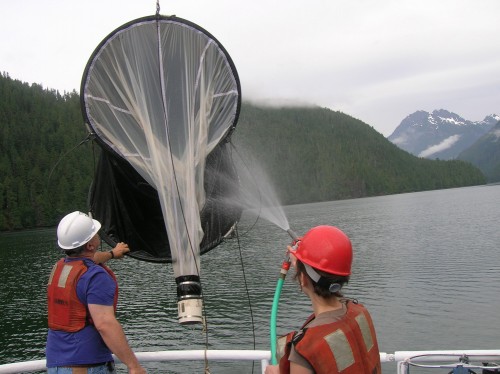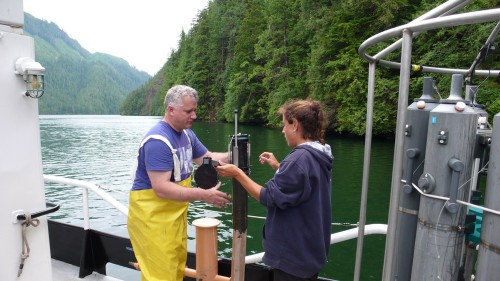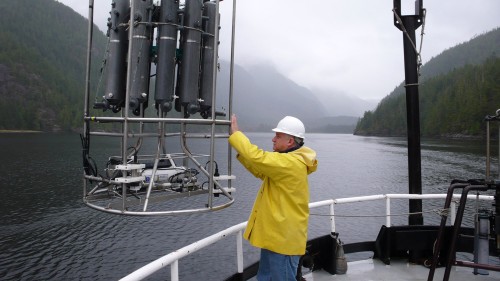As the international search for ways to remove carbon dioxide and other greenhouse gases from the environment intensifies, a team of scientists has identified a process by which marine organisms influence the amount of atmospheric carbon the sea absorbs.
Oceanic diatoms—unicellular glassy algae—harvest a key energy-storing molecule containing phosphorus from the dissolved compounds in ocean water. Instead of processing the phosphorus and releasing it back into the environment, the algae collect and store it in a compound known as a polyphosphate, said physicist Ian McNulty of the U.S. Department of Energy’s Argonne National Laboratory. McNulty collaborated with researchers from the Skidaway Institute of Oceanography, Georgia, and the Georgia Institute of Technology and the University of South Carolina.
The algae then convert these polyphosphate compounds into microscopic pellets that they store for energy. When these diatoms die, however, the polyphosphate pellets contained in their skeletons sink to sediments at the bottom of the ocean. With time, the polyphosphates are transformed into a mineral phosphate called apatite, thus completing the sequestration of phosphorus from seawater.
“If we can understand how phosphorus uptake, metabolism and sequestration take place within marine organisms, we could uncover information that might give us clues as to how carbon uptake and sequestration take place in the ocean and affect the global carbon balance,” McNulty said. “This research is of huge interest to climatologists and bears directly on and the potential to combat global warming.”
Phosphorus is one of the principal ingredients of fertilizer as well as many other compounds present in significant quantities in agricultural runoff that winds up in large bodies of water, said oceanographer Jay Brandes of Skidaway, who collaborated with McNulty on the research.
“Oceans are the repositories of everything that washes off of the lands, and phosphorus is an important nutrient for all kinds of life, especially plant life.” Brandes said. “The interesting thing about this particular process is that because these diatoms need it to survive, the levels of phosphorus will control the size of the algae population. As the diatoms use up the available phosphorus and turn it into polyphosphates, they will die off in large numbers, altering the phosphorus balance.”
In most regions of the ocean, nutrient levels in the water dictate the rate of both phosphorus and carbon sequestration. The removal of carbon from the environment is controlled by the removal of phosphorus and nitrogen, according to Brandes.
During the course of their research, McNulty and his colleagues were surprised to discover that the diatoms created polyphosphates even in waters that contained relatively low concentrations of dissolved phosphorus. The polyphosphates created by the diatoms also proved more durable than anticipated, Brandes said, allowing the researchers to glimpse their entire lifecycle from solutes to apatite.
Much of the research, led by oceanographer Ellery Ingall of Georgia Tech, was performed at Argonne’s Advanced Photon Source. The results were published in the May 2 issue of the journal Science.
McNulty’s work on this research project was funded by the U.S. Department of Energy’s Office of Science, Office of Basic
Energy Sciences. Brandes’ and Ingall’s work was funded by the National Science Foundation.


